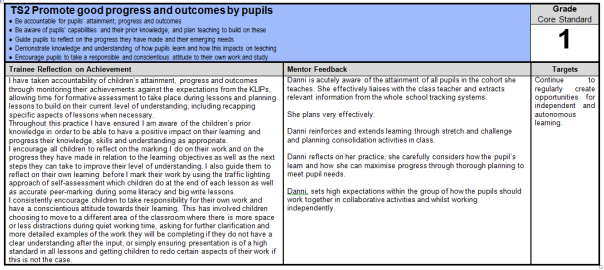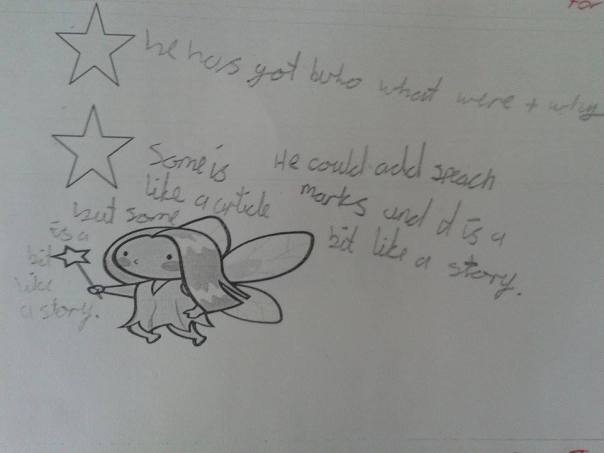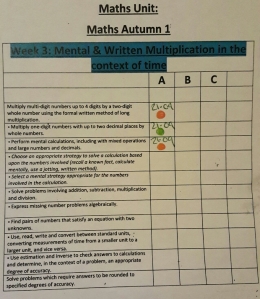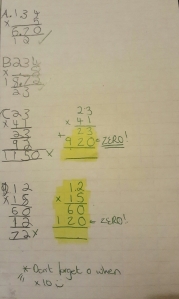Marking Ladders – letter writing
Progressing from my understanding of Two Stars and a Wish, as previously discussed, I implemented the attached form of self and peer evaluation through Professional Practice 2.
Being accountable for children’s attainment, progress and outcomes is a vital part of the teaching cycle as it allows us to monitor their current abilities and compare these to their previous achievements to show any progress made and the next steps that need to be taken. From this point we can adjust our teaching to address the new targets that are set and work towards making progress and developing improved outcomes for each individual child in the class. Children should be informed of the assessment cycle and, wherever possible, work with the teacher to be involved in the target setting process to ensure that fair and appropriate targets are set. Using formative assessment strategies within lessons can be a useful method to obtain where each child thinks they are in their learning and also where they think they need to improve.
This evidence demonstrate my current attainment in regards to the importance of self and peer assessment. I used this model for Big Write sessions, Literacy lessons and, when appropriate, for some topic lessons. The criteria included on the ladders was differentiated for each ability group within the class (from children working on Year 4 objectives, to those working on Year 6 objectives). This ensured that the children were all aware of the specific elements they were aiming to include within their work and could assess themselves continuously throughout the lesson. Children would traffic light each criteria with either green, red or orange to signify their understanding/achievement. At the end of the lesson, the children would swap work and peer mark each others in the same way; they would check whether the self-assessments were accurate and write a positive comment in relation to the overall objective. I would then complete the ‘teacher’ column using the same method for the overall assessment of that piece of work.
I understand the potential impact that carefully monitoring children’s attainment and progress can have on future learning and outcomes as identifying current abilities allows work to be suitably differentiated and therefore allows each child to achieve their maximum potential in all areas of their learning. These ladders were very effective and could be used over multiple lessons for extended pieces of work as they ensured all children knew what they were aiming for in each piece. They could also see what areas they were confident in and where they needed to improve.



